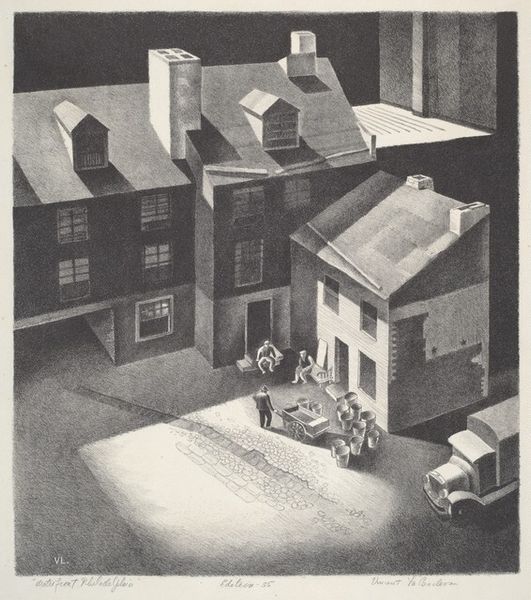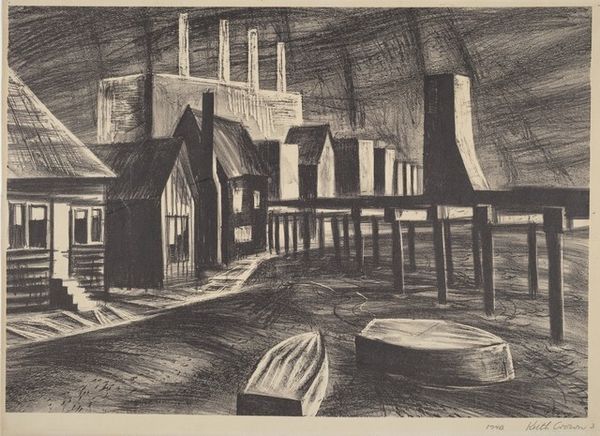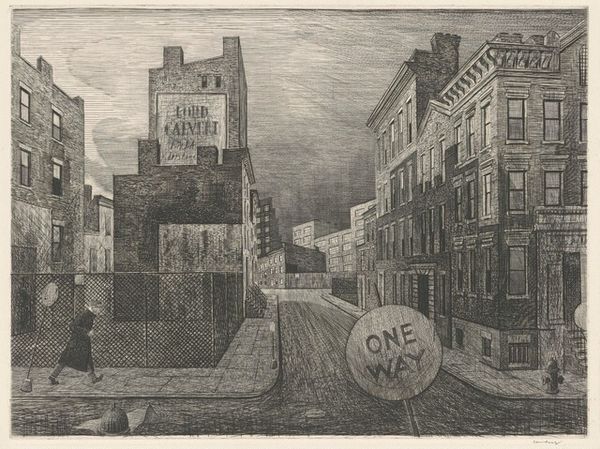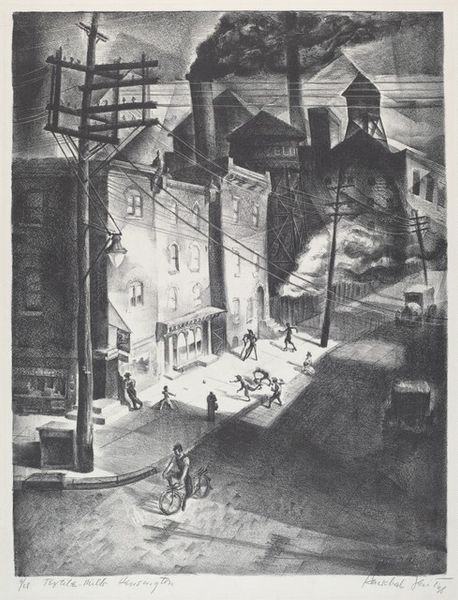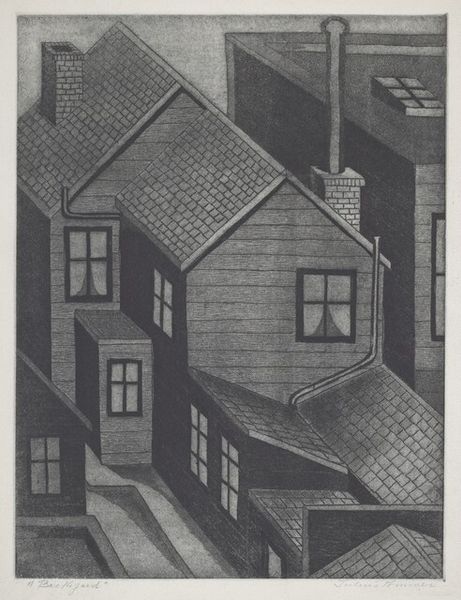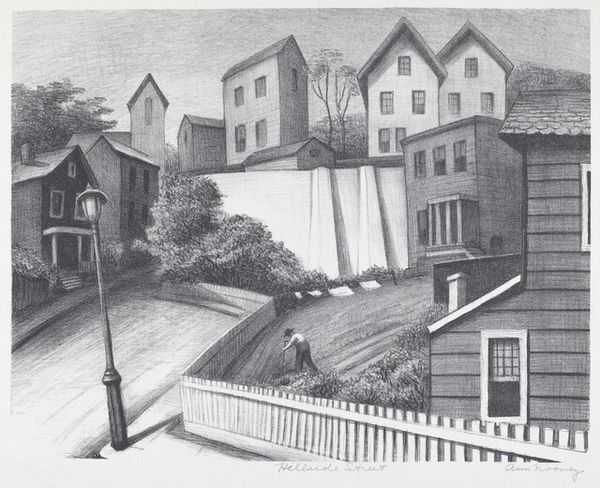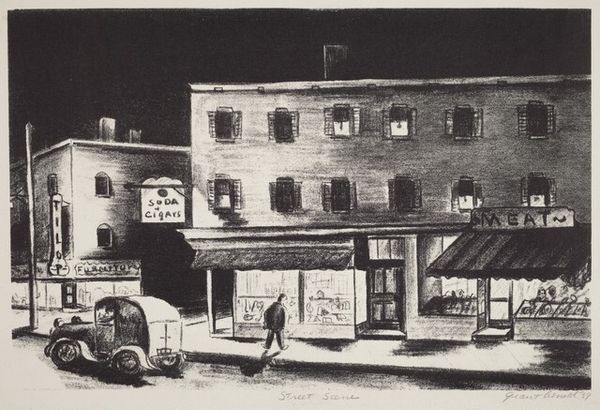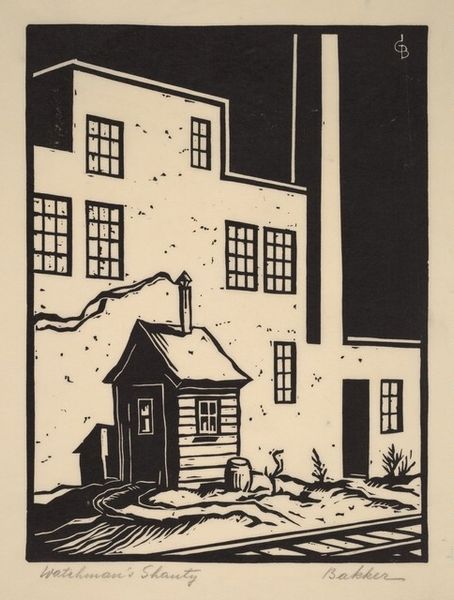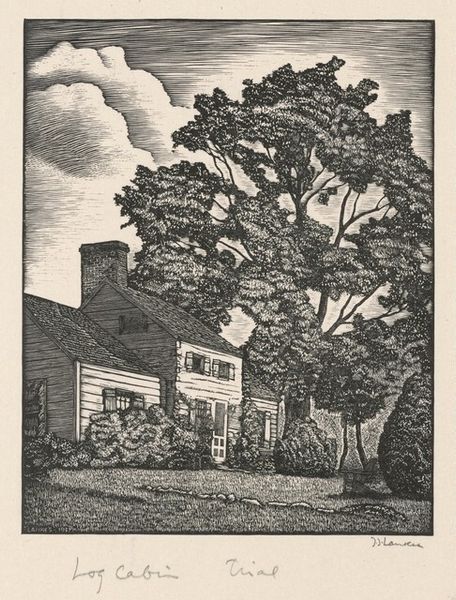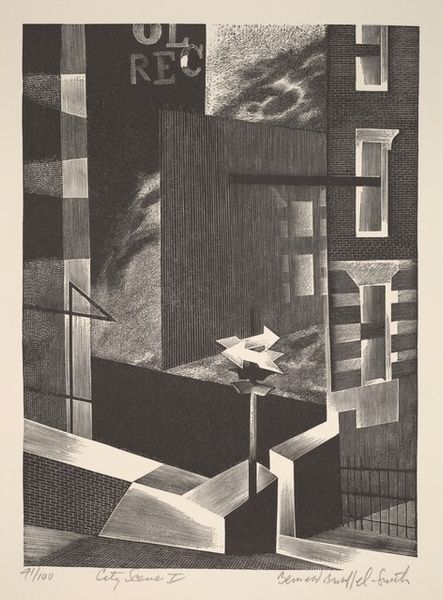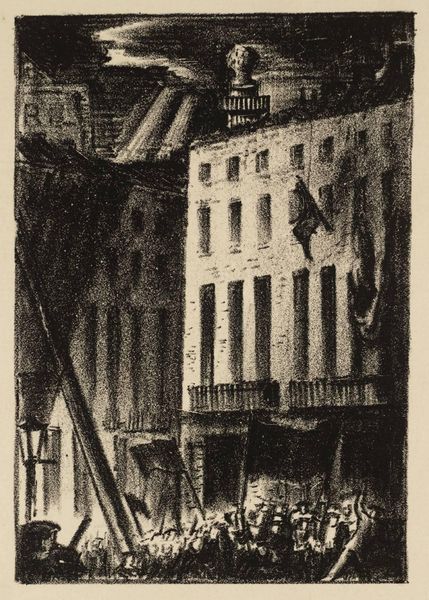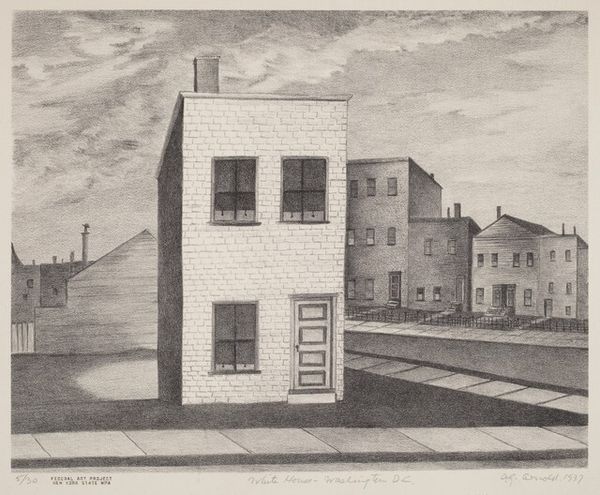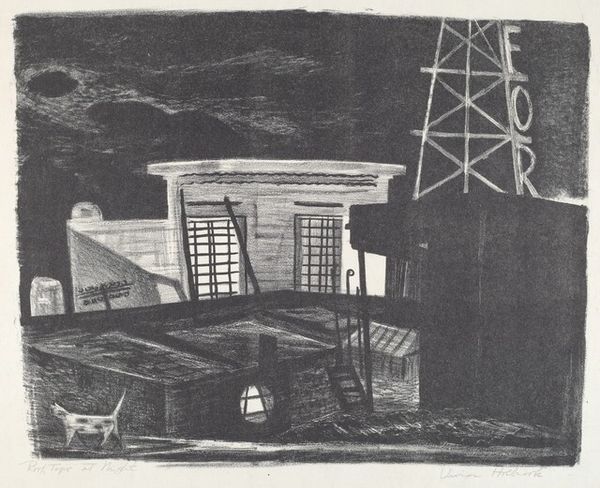
drawing, print, graphite
#
drawing
# print
#
graphite
#
cityscape
Dimensions: image: 215 x 170 mm sheet: 345 x 255 mm
Copyright: National Gallery of Art: CC0 1.0
Curator: Salvatore Pinto’s "Power House," a print created around 1935, greets us with stark contrasts of light and shadow. What’s your immediate response? Editor: I’m struck by how raw and industrial it feels. You can practically smell the coal and the steam rising from that stack. There's a palpable sense of energy, even in this still image. I'm drawn to the rough textures suggesting a tactile experience—I wonder, what materials are at play? Curator: Pinto masterfully employed graphite to create this drawing that later served as a model for the final print. He highlights a tension between the imposing architecture of industrial progress, symbolized by the bridge and factory, and the rather obscured presence of people—there’s a lonely figure visible at one window. The scene is heavy with implications about man’s role in a rapidly changing landscape. What do you think about this man looking through a window? Editor: Well, graphite allows for a very specific range of tone and a striking graphic quality once reproduced in print. I see the social commentary you mentioned in the figure, almost swallowed up by the factory's imposing scale. It really pushes us to consider the human element within industrial processes. There is something alienating here—this man inside—suggesting modern anxieties concerning production, scale, and alienation from human contact. The "SSS" repeated above the windows reinforces an abstract, anonymized power. I imagine there is more than one factory with the same symbols. The buildings can stand for many more factories of the era, an anonymous building in any place. Curator: The imagery certainly speaks to a society in the throes of industrialization and its discontents. The bridge itself, soaring above the power plant, suggests a path toward the future. Visually and conceptually it almost overpowers all the rest. In a curious turn, however, the number of windows also grabs my eye and makes me think this factory, a harbinger of progress, seems equally rooted in another era: notice the similarity between window design in this early 20th-century power plant, to the layout of windows in Baroque or Rococo Palaces—it is as if Pinto attempts to bridge past and present. Editor: Absolutely. We must note the social contexts that determine and produce material culture, with their continuous impact over the production process and cultural meaning of prints like this. But also how this culture in itself influences architecture, from bridges to window composition. This dialogue between past and present—we see these echoes constantly repeating in time. What an engaging and dynamic conversation this print facilitates. Curator: Indeed, "Power House" captures a crucial moment in the ever-evolving story of humanity and technology. A landscape charged with ambition and also perhaps, a bit of melancholy.
Comments
No comments
Be the first to comment and join the conversation on the ultimate creative platform.
